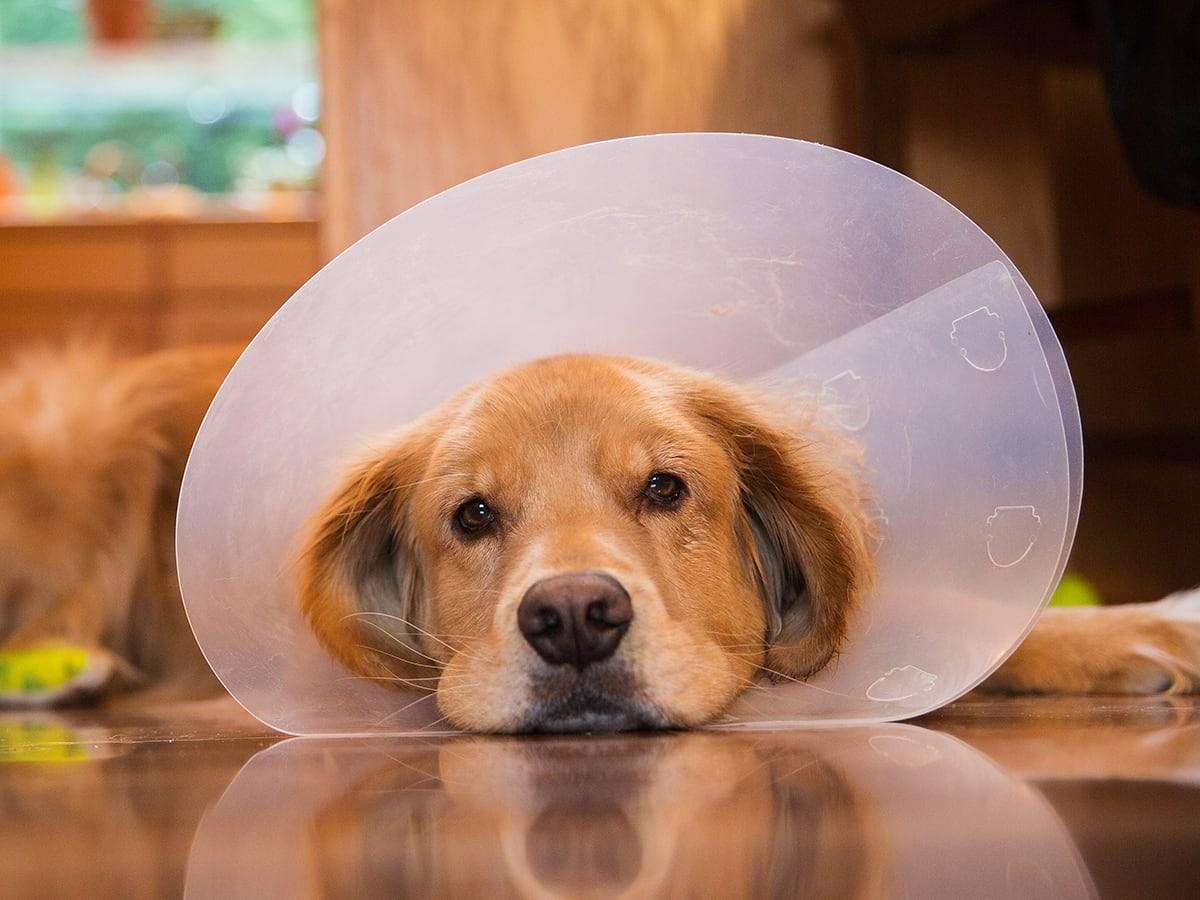Alternatives for Surgical Dog Cones
All dog owners have seen the infamous dog cone. This cone, commonly referred to as the “cone of shame,” is an indication that a dog has recently had a surgery or is dealing with some kind of skin irritation. While these cones serve an important purpose, they can be clunky and uncomfortable for your pup. In most cases, dogs dread the cone of shame. Recovery is already a hard time, and this pesky cone can make it all the more upsetting! Luckily for your dog, there are many alternatives available that work just as well.
When are dog cones needed?
Dog cones, or E-collars, are regularly used to treat dogs who have recently undergone a surgery or who have irritated areas. These cones act as protection for healing wounds and keep your dog from reaching these areas. Dogs often unintentionally prevent wounds from getting better by licking or chewing at the area.
How long should your dog wear a cone after a surgery?
This will depend on what kind of surgery they had! For a neuter or spay procedure, dogs will typically need to wear a cone for 10 to 14 days afterwards. Your dog will need to wear a cone for long enough that their incision has time to heal. Follow your veterinarian’s advice on how long your dog should wear his cone following a surgery. Here are some tips to care for your dog after he’s been neutered or spayed.
Problems with traditional surgical dog cones
Traditional dog cones can be inconvenient for your pup. The shape of the cone can amplify sound as well as limit their field of vision, which can be disorienting or even scary for them. In addition, they can make it difficult for dogs to eat and drink. They are typically made of plastic, which doesn’t bend easily. This means it can also make it very hard for your dog to lounge and sleep comfortably.
Soft Cones
Soft cones and recovery collars are more comfortable options than a medical-grade cone but offer all the same protection. In addition, these cones won’t amplify sound or obstruct your dog’s peripheral vision. However, these cones are not made of plastic, so they are not see-through. Make sure the fit of your dog’s soft collar allows them to see out of their periphery. Soft cones have flexible fabric, which with help your dog lounge and sleep comfortably. These cones also attach directly to your dog’s collar and have an adjustable fit.
Avoid collars that are too soft. If they don’t maintain their shape they can still work, but you’ll want to make sure your pet cannot reach their affected areas. Since they are more flexible, some may be pulled off easily. To avoid this problem, look for soft e-collars that come with a hard skeleton. This will make them more rigid and harder to get off.
Inflatable E-Collars
Inflatable collars can be more comfortable for your pup because they mold more easily to surroundings, so your dog will have an easier time lounging. It’s more padded than a traditional cone and will minimize your dog’s head movements so they can’t get to any wounds. Inflatable collars that are shaped similarly to a U-shaped travel pillow are a good option because they don’t fully extend around your dog’s face. This will allow him to eat, drink, and move about easily. One thing to be wary of with these collars is that they can puncture easily, so you’ll need to monitor your dog when he or she is wearing one of these. Also, make sure your pet can’t reach their hot spots as some breeds with longer necks and snouts may be able to work around these kinds of cones.
Hard-to-Soft E-Collar
Why try a hard or soft collar when you can get both in one? These collars have a soft, padded material on the interior and a harder, flexible material on the outside. Your dog won’t be able to reach any of their affected areas but will still be able to move around comfortably. The shape is similar to a traditional cone and the material is not see-through, so your dog will only be able to see right in front of them. If your dog is having trouble eating or drinking, the edges can be folded down to make it easier.
Some of these collars are especially advantageous because they can be worn in several ways. It can be worn like a traditional collar, or you can take out the hard parts to make it floppier and softer. If your dog is still uncomfortable, some models can be worn around his chest and shoulders to keep him from accessing those areas while having freedom to move his head and neck.
Onesies or Clothing
Onesies and bodysuits can be used to cover affected areas so that your dog can’t access them directly and still has freedom to move comfortably. Look for a bodysuit that has breathable fabric and a tight but comfortable fit. These options can be much more comfortable than a
cone, but your dog may still try to get at their wounds. If they are chewing even with the onesie one, the clothing may not provide enough protection.
Keep your dog happy and healthy
If you are worried about your dog’s incisions or wounds, speak to your veterinarian about how you should proceed. If they recommend a cone, we hope we were able to answer all your questions about them! There are many different options out there and it’s up to you and your pup to decide which is best for your needs. We understand how much you cherish your furry friends and we want to be there to help you with anything you may need to keep them safe and happy.
